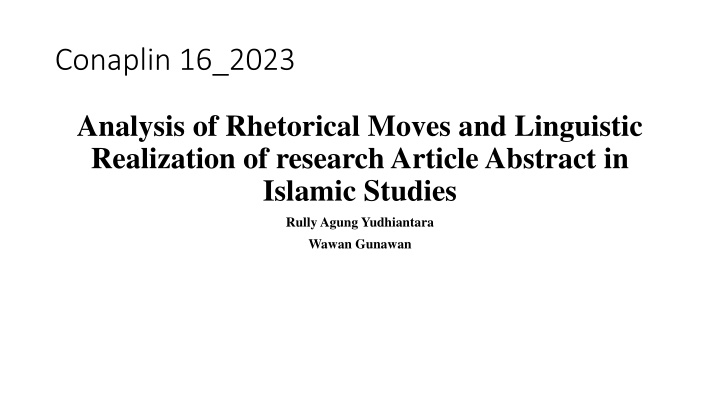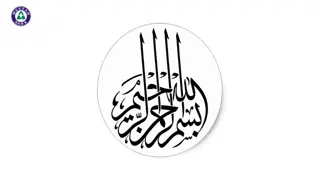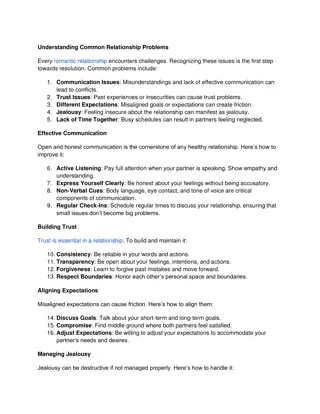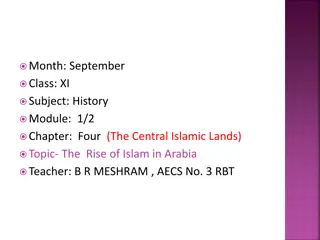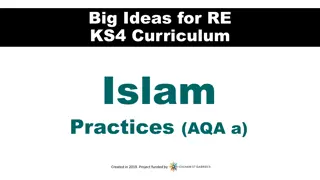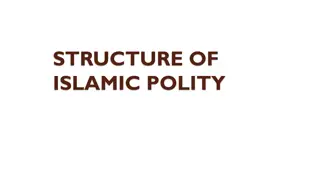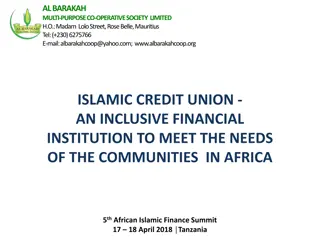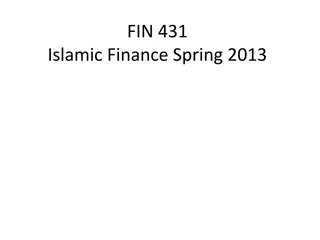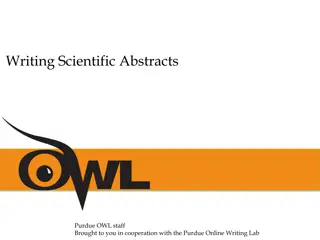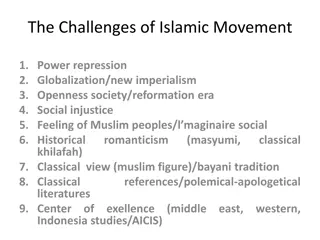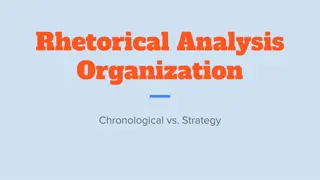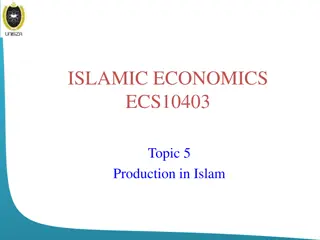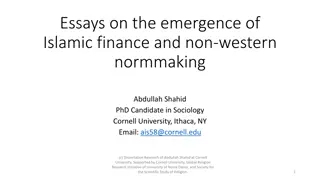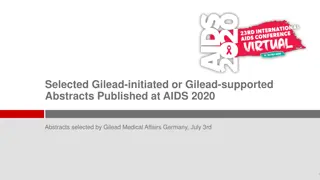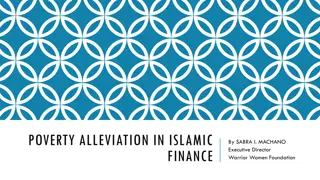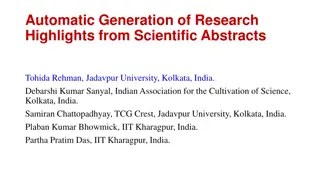Analysis of Rhetorical Moves in Islamic Studies Research Abstracts
Investigating rhetorical moves and linguistic realization in research article abstracts in Islamic studies reveals the prevalence of specific moves such as Purpose and Results, while Conclusion is least common. Different articles apply varying numbers of moves based on Hyland's framework.
Uploaded on Sep 11, 2024 | 3 Views
Download Presentation

Please find below an Image/Link to download the presentation.
The content on the website is provided AS IS for your information and personal use only. It may not be sold, licensed, or shared on other websites without obtaining consent from the author.If you encounter any issues during the download, it is possible that the publisher has removed the file from their server.
You are allowed to download the files provided on this website for personal or commercial use, subject to the condition that they are used lawfully. All files are the property of their respective owners.
The content on the website is provided AS IS for your information and personal use only. It may not be sold, licensed, or shared on other websites without obtaining consent from the author.
E N D
Presentation Transcript
Conaplin 16_2023 Analysis of Rhetorical Moves and Linguistic Realization of research Article Abstract in Islamic Studies RullyAgung Yudhiantara Wawan Gunawan
INTRODUCTION Knowledge and skill to write abstract is crucial for authors wishing to publish their research article (Hanidar, 2016) Previous studies on RA Abstract: (Lor , 2004); (Kafes, 2012) and (Ramadhini et al., 2021). However previous studies provide little attention to RAA in Islamic studies This study aims to investigate rhetorical movement and linguistic realization in RAAin Islamic studies (Abdelsalam El-Dakhs, 2020); (Sidek et al., 2016);
METHOD (Data collection) 1. Selecting 5 Scopus-indexed journal on Islamic studies 2. Creating corpus RAA comprising of 20 abstract no Journals Research article Abstract 4 4 4 1 2 3 STUDIA ISLAMIKA Al-Jami ah IJIMS (Indonesian Journal of Islam and Muslim Societies) QIJIS (Qudus International Journal of Islamic Studies) 4 4 5 Journal OF Indonesian Islam 4
METHOD (Data Analysis) 1. The move analysis was done through move analysis and to explain Hyland s (2000) revised model of Introduction, Purpose, Method, Product, and Conclusion (I-P-M-Pr-C)as the main analysis model
RESULTS (Rhetorical movement) RHETORICAL MOVEMENT RESEARCH ARTICLE ABSTRACT OF ISLAMIC STUDIES NO ARTICLE 1 RAA 1 2 RAA 2 3 RAA 3 4 RAA 4 5 RAA 5 6 RAA 6 7 RAA 7 8 RAA 8 9 RAA 9 10 RAA 10 11 RAA 11 12 RAA 12 13 RAA 13 14 RAA 14 15 RAA 15 16 RAA 16 17 RAA 17 18 RAA 18 19 RAA 19 20 RAA 20 PERSENTASE INTRODUCTION V V V V V V V V V V V 11 (55%) PURPOSE V V V V V V V V V V V V V V V V V V V V 20 (100%) METHOD V V V V V V V V V V V V V V V V V V 18 (90%) RESULTS V V V V V V V V V V V V V V V V V V V V 20 (100%) CONCLUSION NOTES V V V V V V V 7 (35% 3 4 3 3 5 5 3 4 4 3 4 3 5 5 5 4 3 4 3 3
Rhetorical moves Based on the results, PURPOSE (move 2) and RESULT (move 4) occur in 20 abstract (100%). In contrast, CONCLUSION ( move 5) has the lowest occurrence in 7 articles(35%). Other moves have received their portion: METHOD occurs in 18 articles (90%) and INTRODUCTION occurs in 7 articles (35%), Some article have applied all the moves in Hyland s framework. Out of 20 abstracts, five RAA (25%) have applied five moves, nine RAA (45%) apply three moves and six RAA (30%) apply four moves.
Linguistic Realization the voice used in the abstracts is active voice especially in move 1, move 4, and move 5. passive voice is used to realize move 2 and move 3. the use of tense in terms of present tense is applied in move 1 and move 5. it is shown to discuss about the general topic of the abstract and conclusion. the use of past tense is mostly applied in move 3 and move 4. it is used to talk about methodology and results of the study
CONCLUSION RAA in Islamic studies have applied Hyland framework. In terms of frequency, move 2 (purpose) and move 4 (result) are obligatory. Out of 20 RAA, 5 RAA have applied all moves. RAA in Islamic studies have used active and passive voice. The former occurs in move 1, move 4 and move 5 and the latter occurs in move 2 and move 3. in terms of tense, Present tense is used in move 1 and move 5. Past tense is used in move 3 and move 4.
